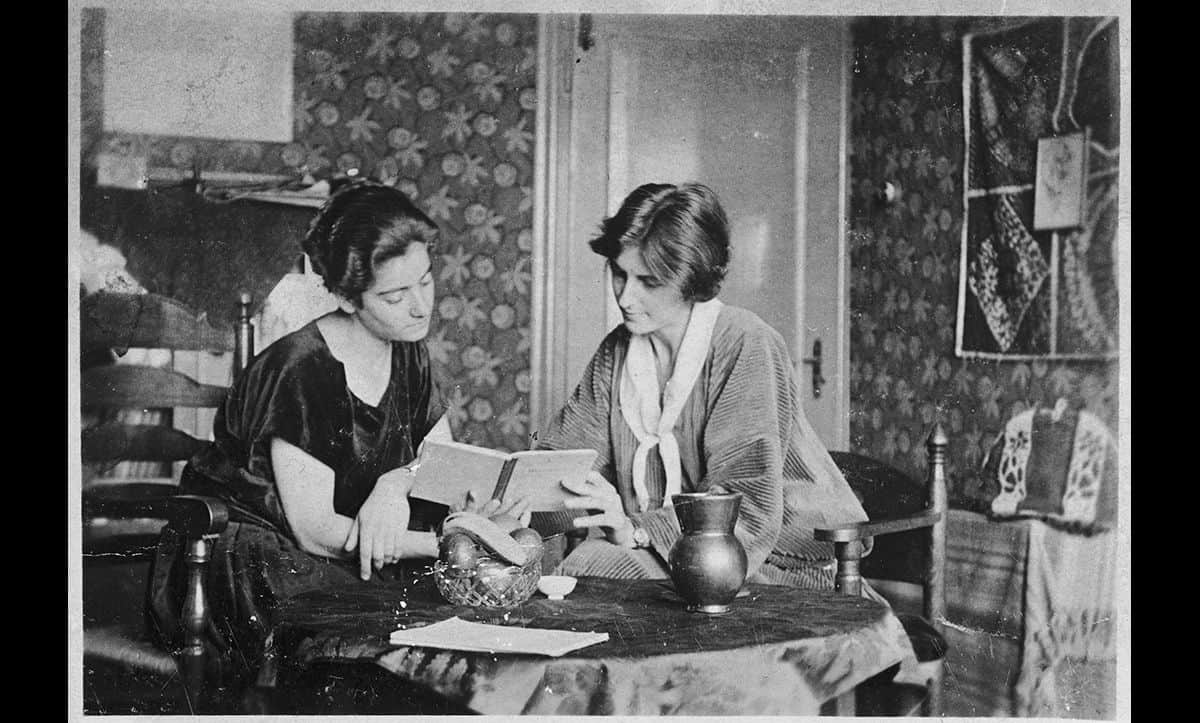1933-1938
Roma
and
Sinti
were persecuted before, during and after the Holocaust.
Following the Nazi rise to power, the persecution of all Roma in Germany increased and eventually became
genocidal
. Prior to the Second World War, approximately 30,000 Roma lived in Germany, and just under a million lived across Europe.
The Nazis believed Roma were ‘non-Aryan’ and an inferior race which had genetically inherited criminal qualities. This belief was reinforced by the research of the
eugenic
scientist
Dr. Robert Ritter
. As a result of Ritter’s research and their racist beliefs about Roma, the Nazis subjected many Roma to forced
sterilisations
to prevent them from having children.
On 17 June 1936, Heinrich Himmler became Head of the German Police. This new role gave Himmler unlimited control over the terror forces in Germany. Just under two years later, on 16 May 1938, Himmler established the Reich Central Office for Combating the Gypsy Nuisance. This office centralised efforts to persecute Roma living in the Third Reich.
On 8 December 1938, Himmler issued the Decree for Combating the Gypsy Plague. Amongst other actions, the decree ordered the creation of a nationwide database of all Roma living in the Third Reich. This database would later be used to round up Roma and put them in forced labour and concentration camps.
Alongside these developments, in the second half of the 1930s, a large number of holding camps were created. These camps designated certain areas of the cities or towns where Roma could live. The camps were created individually by the different regional governments, varying from city to city and between states.
The initial Roma camps were portrayed as a move to clean up inner cities and remove any unauthorised dwellings in municipal areas, which often attracted complaints. The camps varied, but most had limited sanitation and were guarded by a police or SS officer. At this stage, most people were free to enter and leave the camps for work or leisure. Despite this, the camps still marked a large escalation in the persecution of Roma, and a huge
infringement
on people’s freedom and privacy.
This was, however, simply the beginning. Following the outbreak of the Second World War, the nature of the camps changed. The rules became stricter, with increased supervision, curfews, and daily head counts of the occupants. In October 1939, a decree was issued banning the movement of Roma. People in the camps also became subject to compulsory labour.
1939-1945
The Nazi policy towards the Roma population escalated following the outbreak of war and soon became
genocidal
.
On 27 April 1940, Heydrich issued the Decree for the Resettlement of the Gypsies, which aimed to deport all German Roma from the Reich within one year. This decree resulted in 2500 people being deported to the General Government in Poland, before it was suspended in September 1940.
In September 1941, 5,000 Austrian Roma were deported to the Łódź Ghetto, where many of them died from infection or were murdered.
On 16 December 1942, a decree was issued by Himmler to move all Sinti and Roma in Reich Territory to Auschwitz, where a special camp had been built to hold them. Following the order, more than 22,000 Roma (most of the remaining Roma in Germany) were rounded up and sent. Just a few survived.
A number of inhumane medical experimentations took place on Roma in the various concentration camps they ended up in, including the infamous experiments by
Dr. Joseph Mengele
at Auschwitz, and typhus injections at Natzweilier.
In addition to their horrific treatment in camps, Roma were also murdered in their thousands by the
Einsatzgruppen
in eastern Europe. The Einsatzgruppen conducted mass shootings of any ‘undesirable’ groups in occupied territories, following behind the invading German Army.
The total number of Roma murdered in the Holocaust is unknown. A number of factors contribute to this. Many of the Roma killed were murdered by the Einsatzgruppen or Nazi collaborators in Soviet territories and Yugoslavia, where murders were often not recorded. The Nazis variety of camp categories for Roma (they were classified
Zigeuner
, criminals or
a-socials
depending on where and when they were imprisoned) also makes calculating a definite figure challenging. Finally, many camp records are incomplete, meaning accurately assessing the number of victims, and different types of victims specifically, is very difficult.
The total number of Roma murdered by the Nazis has been roughly estimated by historians to be between 200,000 to 500,000 people.








![An extract of a report written by Polish national Moritz Kupfermann after being arrested in the town of Elberfeld in Germany and deported to Zbaszyn, where he described his arrival in Poland on the 29 October. Moritz wrote: ‘There was no help because Poland was allegedly not informed about the German action […] Everyone tried to get some straw to sleep in the horse stables. The rest who didn’t go into the stables stayed in the train station waiting rooms or the station hall. Sunday, Monday and Monday night the registration continued, but even then there was no help and we tried to put things in order ourselves.’](https://dsvfmvr182ibt.cloudfront.net/prod/uploads/2023/10/Poleknation-Photo-2-NEW_1200x723_acf_cropped.jpg)















































